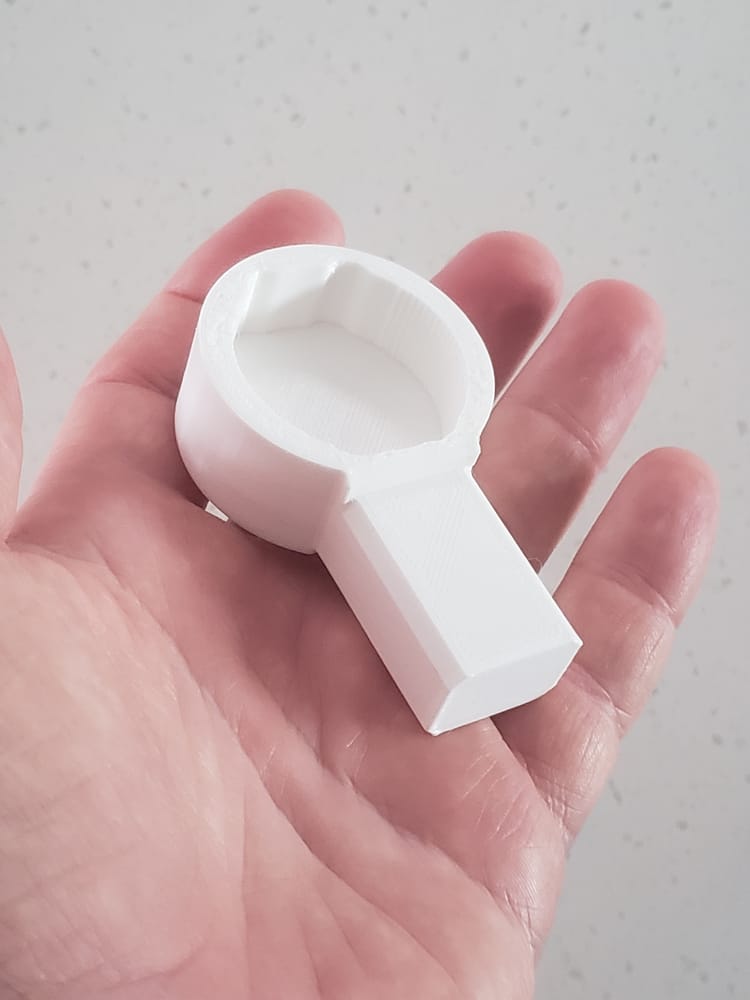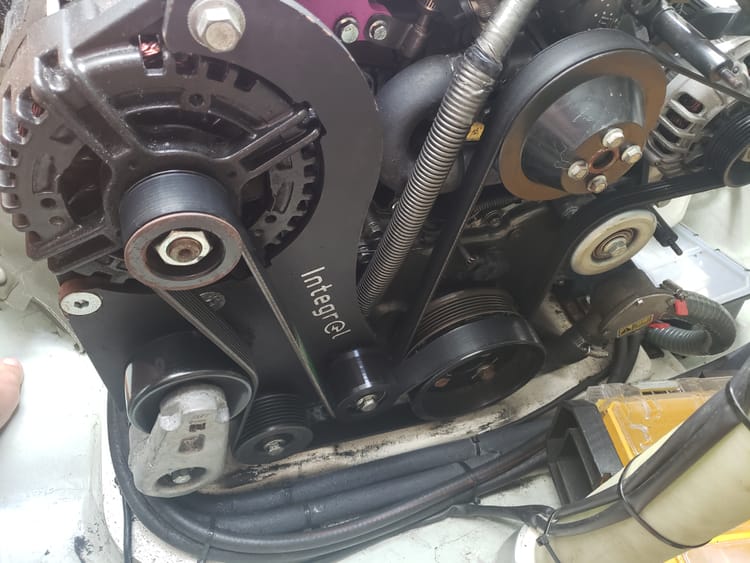Away To Me - our floating power plant
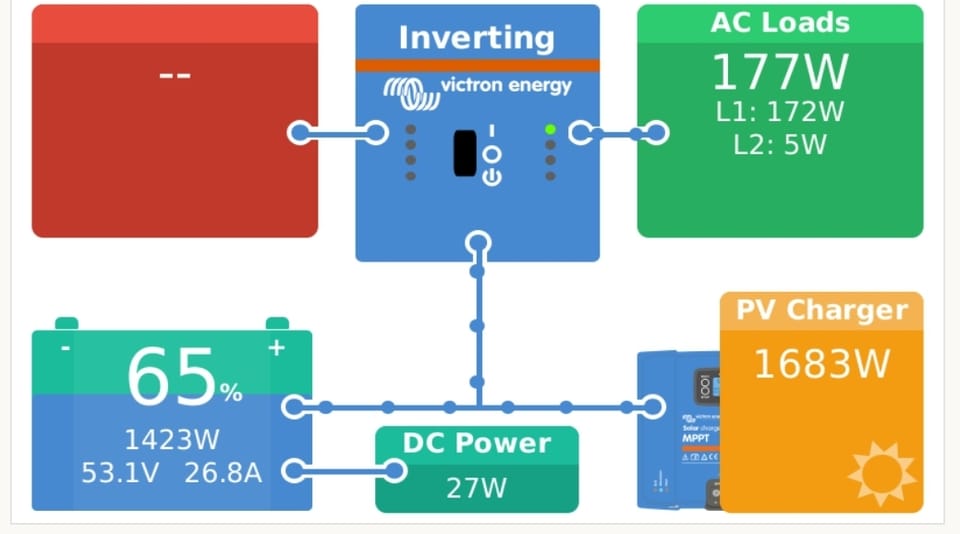
Let's talk power! MOAR POWER!!!

We very rarely go into marinas, generally preferring to stay out on anchor or mooring ball. This means that the vast majority of the time, we are unplugged, off-grid, and we need to generate and store the power that we use for All The Things.
Even when we do visit marinas, about half of the time we aren't able to plug in to shore power - either because there isn't a power pedestal within reach, or because it's the wrong voltage and/or frequency. We can fix these problems by installing a power transformer and buying a lot more power cable, but...meh, we don't really need to right now, so why bother?
The only source of non-renewable energy that we have on board is diesel fuel (to run the Yanmar propulsion engines).
Definitions
In this article, I'm going to use some industry standard abbreviations and terms.
- W - watt (e.g. a 370W solar panel); it describes the rate of transfer of energy.
- A - amp (or ampere, e.g. a 10A circuit breaker); it describes the amount of electric current that is flowing. For a breaker or fuse, it describes the amount of current that can flow through it before the breaker trips or the fuse blows.
- V - volt (e.g. 12V, 48V, 110V); it describes the electric potential between two points of a wire.
- VA - volt-amp (e.g. 5,000VA inverter); it describes the amount of apparent power, usually in an alternating current circuit.
- Wh - watt hours; this is a measure of power storage, also an amount of power produced/used over an hour.
- Ah - amp hours; this is an alternative measure of power storage, often used to describe the capacity of a battery, since the voltage in the battery changes over time as you use it.
- AC - alternating current; this is like the electric service that you have in your home.
- DC - direct current; this is the kind of power that you get from a battery.
- Inverter - a device that takes DC power from a battery and produces AC power, usually at 110V or 220V.
Some of these things have scaling units, such a kilo (e.g. 1kWh is 1,000Wh), and Mega (e.g. 1MWh is 1,000,000Wh, and is 1,000kWh).
It should be noted that you can convert from amps to watts by simply multiplying the voltage:
- W = A * V, so 10A * 12V = 120W
Also, you can convert from amp hours to watt hours by the same math:
- Wh = Ah * V, so (300Ah * 12V = 3,600Wh or 3.6kWh)
I tend to prefer using W and Wh in my descriptions, since this already includes the nominal voltage of the system. We have a mix of voltages on board (12V, 48V, 110V), and it can get confusing without including voltage - yes, our 200Ah 48V battery has more power storage than our 300Ah 12V battery, but this wouldn't be obvious just from looking at the Ah rating.
As previously noted, the voltage of a battery changes as it is charged and discharged. A 48V battery will actually read 53-54V when fully charged. To compute the power capacity in Wh, we use the nominal voltage of the battery (e.g. 48V or 12V) rather than the measured voltage.
All The Things
What are All The Things? Obviously, there's the usual items (cell phones, tablets, laptops, Starlink internet, refrigerators and freezers, lights, water pumps, instruments, and so on).

But there are also bigger draw items:
- watermaker - this takes sea water and removes almost everything from it, using filters and a high pressure reverse osmosis membrane, giving us ultra pure water
- dinghy battery - we have an electric outboard motor, and 2 large batteries that need to be charged periodically
- Induction stove top for cooking
- Convection microwave for heating and baking/air frying
- Electric grill
- Scuba tank compressor
- Water heaters
- Air conditioners (oh what a luxury!)
Everything on board is electric powered. In order to run All The Things, we have to generate a lot of power!
Yes, we could make do with less. Lots of boats certainly do. But all of these creature comforts and conveniences make life aboard pleasant for us.
We chose to go without propane and gasoline partly for safety, and partly for convenience. On the safety side, both gasoline and propane are very explosive at low temperature, whereas the flash point of diesel is 55C/131F. Of course, all 3 fuels are a health hazard. On the convenience side, there are different standards for propane tanks, and US-made tanks can be nearly impossible to fill in other countries. Plus, fuel shortages are a very real thing, even in major countries. Last year in Panama, gasoline was nearly impossible to find due to shortages and protests, and the same seems to be true during the protests this year.
Power storage
There are four main batteries on board that are associated with running the boat, and they are a mix of 12V and 48V.
12V batteries
We have 3 sets of 12V batteries. Each engine has its own starter battery (a standard sealed lead-acid battery), and we have a moderately large Lithium Iron Phosphate (LiFePO4) battery bank to run the 12V house loads.
These house loads are things like lights, instruments, winches, anchor windlass, refrigerators and freezers, USB outlets, fans, and so on.
The 12V house battery bank is comprised of 3 batteries, each one being 300Ah, for a total of 900Ah. This amounts to 12V * 900Ah = 10.8kWh of power storage.
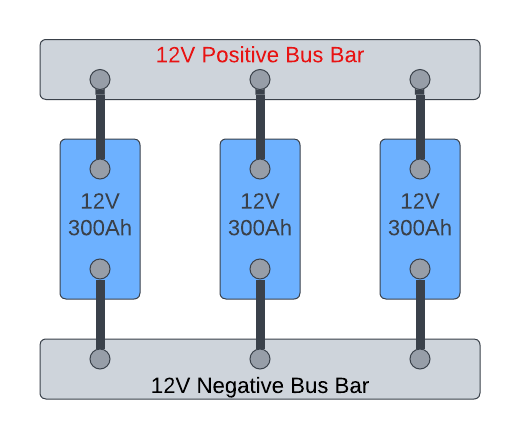
Our 12V power usage varies from about 100W up to 500W, depending on how often the refrigerator compressors kick on, how many lights are on, etc. With an average consumption of 300W, we can go about 27 hours before the battery reaches 25% capacity and we need to charge it.
We don't have an inverter connected to these batteries to get AC power, only DC electronics are connected to this battery bank.
48V batteries
We have a fairly large LiFePO4 battery bank for the 48V house loads.
The main things that use the 48V house batteries are the inverters (which produce 110V AC power), and the DC-to-DC charger that keeps the 12V bank topped up.
The 48V house battery bank is comprised of 6 batteries that are 24V 200Ah, in a 2S3P configuration. This means that there are 2 batteries connected in series (2S), and 3 of those in parallel (3P). When connecting batteries in series, you add the voltage together, so 2S gives us 24V +24V = 48V. The capacity (Ah) stays the same in a series connection, so we have 48V 200Ah. When connecting batteries in parallel, you add the Ah together, so 3P gives us 200Ah + 200Ah + 200Ah = 600Ah. The voltage stays the same in a parallel connection, so we have 48V 600Ah. This amounts to 48V * 600Ah = 28.8kWh of power storage.

Our 48V power usage varies wildly depending on what things we are using. The watermaker draws about 2.2kW while it is running. If we run it for 2 hours, we use 4.4kWh of power (about 15% of our capacity), and we create about 60 gallons of fresh water.
Last night we were drawing about 7kW while running both aircon units, running the convection oven, running the induction stove, running the kettle to boil water, and charging the dinghy battery.
In order to support these kinds of power loads, we have 2 Victron Quattro 5kVA inverters. They can handle a peak load of 10kW, and a sustained load of more than 8kW.
Charging the batteries
We have 3 ways of generating power to charge the various 12V and 48V batteries.
We don't have a generator on board, and the charging sources that we have are much better than a generator would be. Our friends who have generators complain about how long they have to run them in order to get an equivalent amount of charging done, and complain about the extra maintenance and issues with the generator.
Solar
Our preferred source of power for the boat is solar power. We have 8 solar panels, 5 on a stainless steel solar arch at the back of the boat, and 3 on the coach roof near the mast.

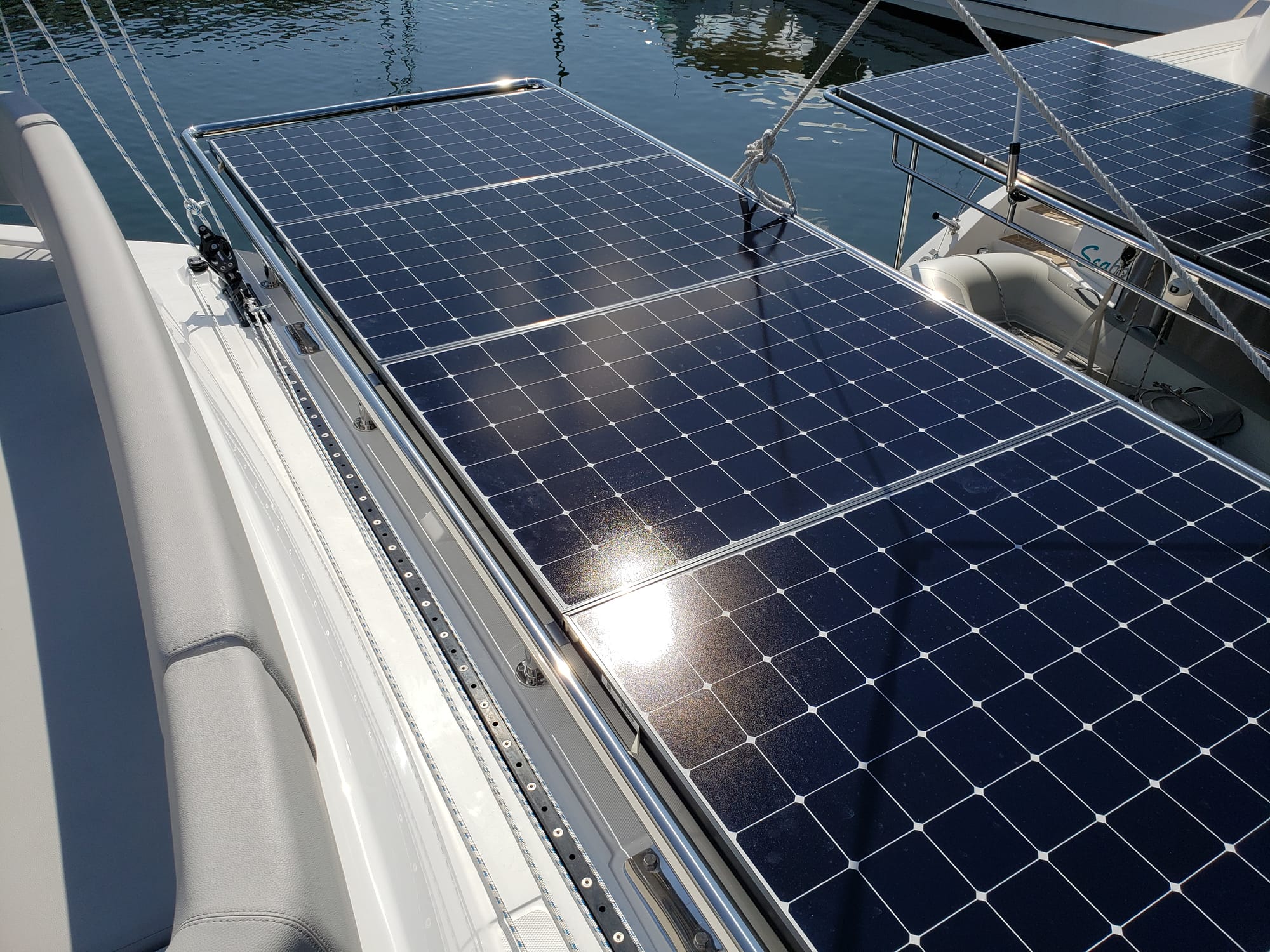

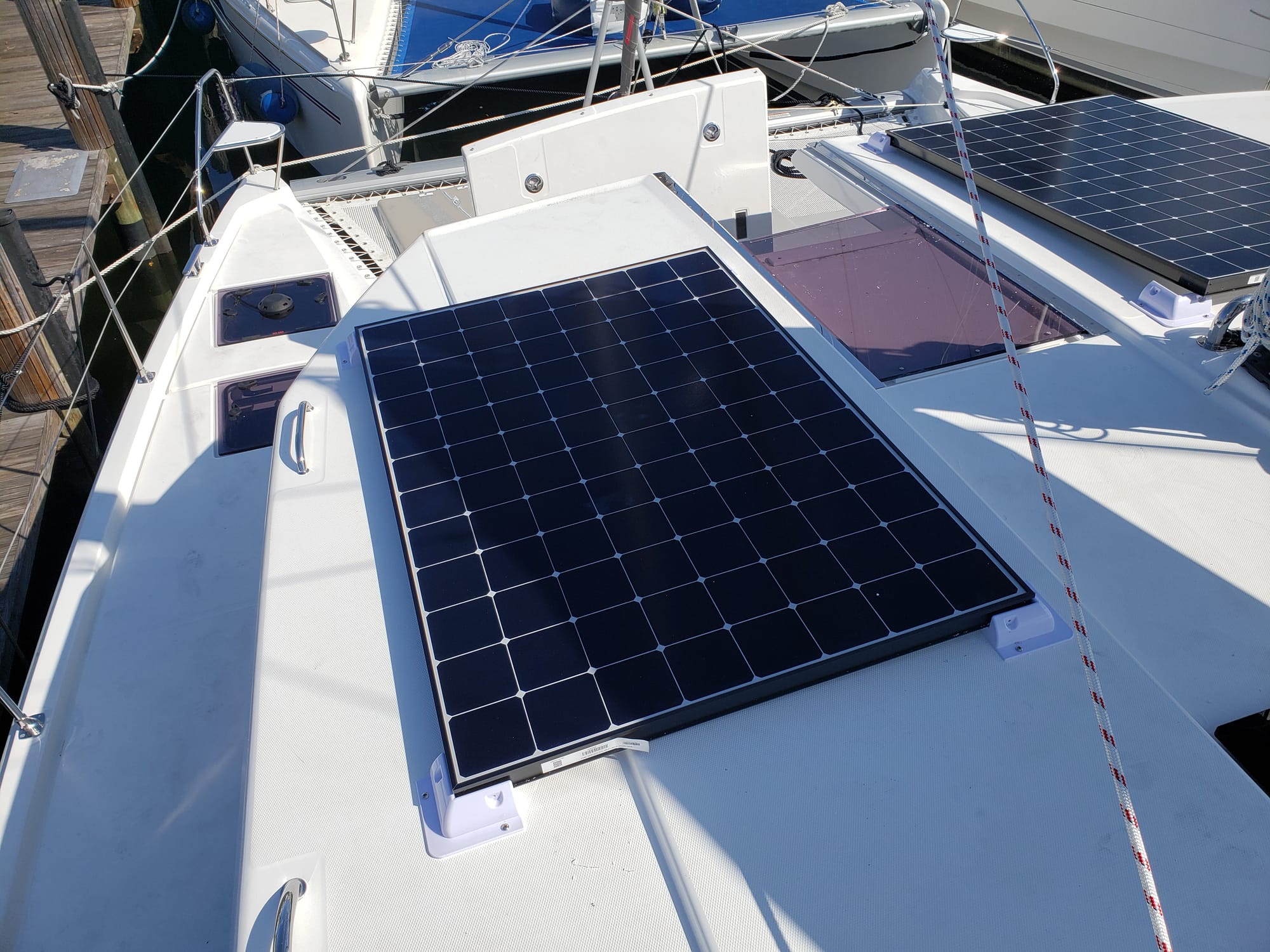
Each solar panel is rated for 370W, which gives a theoretical max of 2.96kW from all 8. In reality, because of clouds and shading from the sails and rigging, it's less than this.
On a good day, we produce 12-14kWh of power from the sun. On a rainy day, this might be as low as 1kWh.

These solar panels only charge the 48V house bank. At the moment, we don't have any solar panels for the 12V house bank, but stay tuned, I have plans for this...
Alternators
Each engine has 2 alternators attached, and each alternator charges different things.
The standard Yanmar alternators charge the 12V starter battery, and when those are full they switch to charging the 12V house battery.
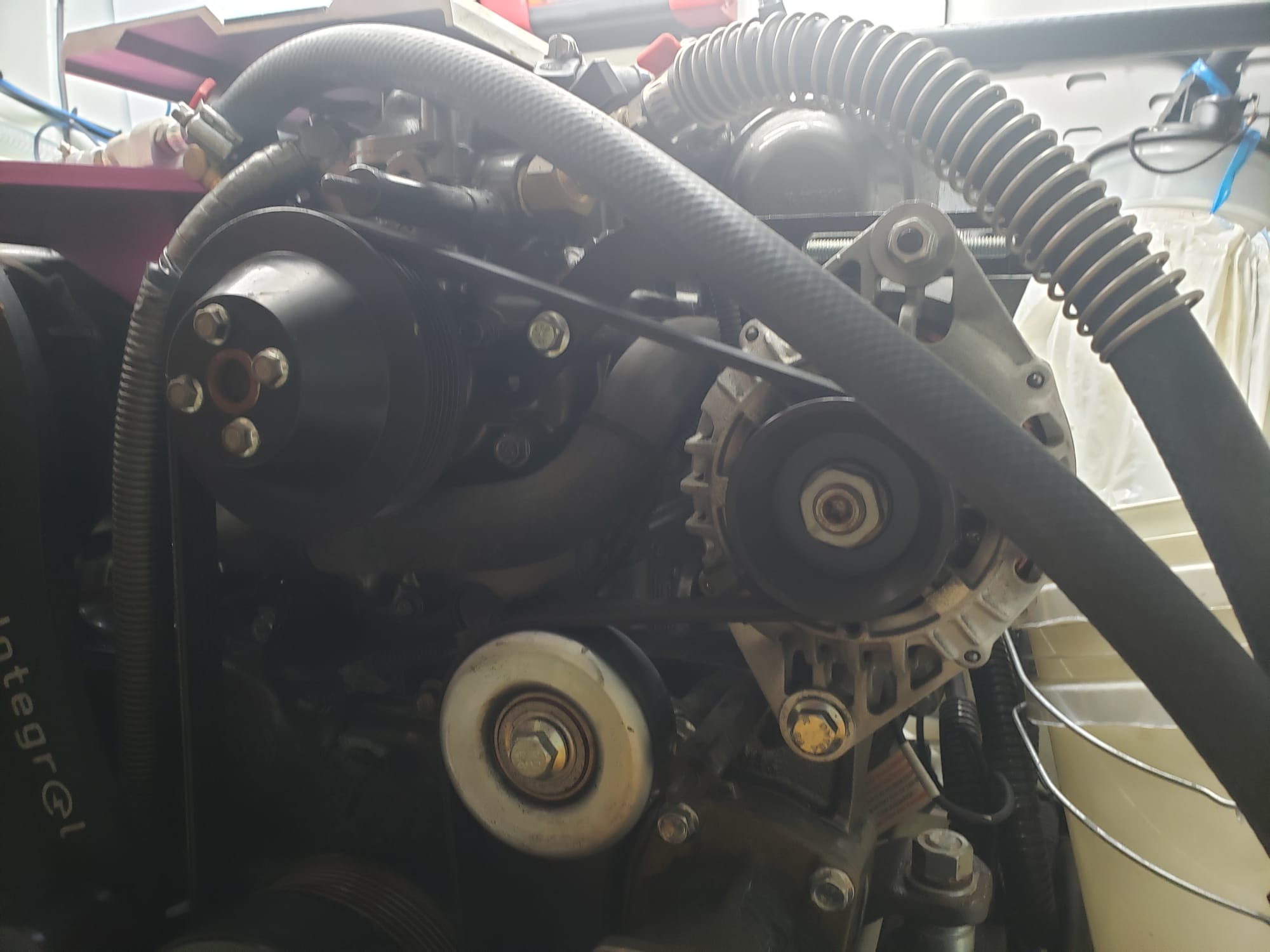
We also have high output alternators from a company called Integrel Solutions (https://integrelsolutions.com/). These charge the 48V house bank.
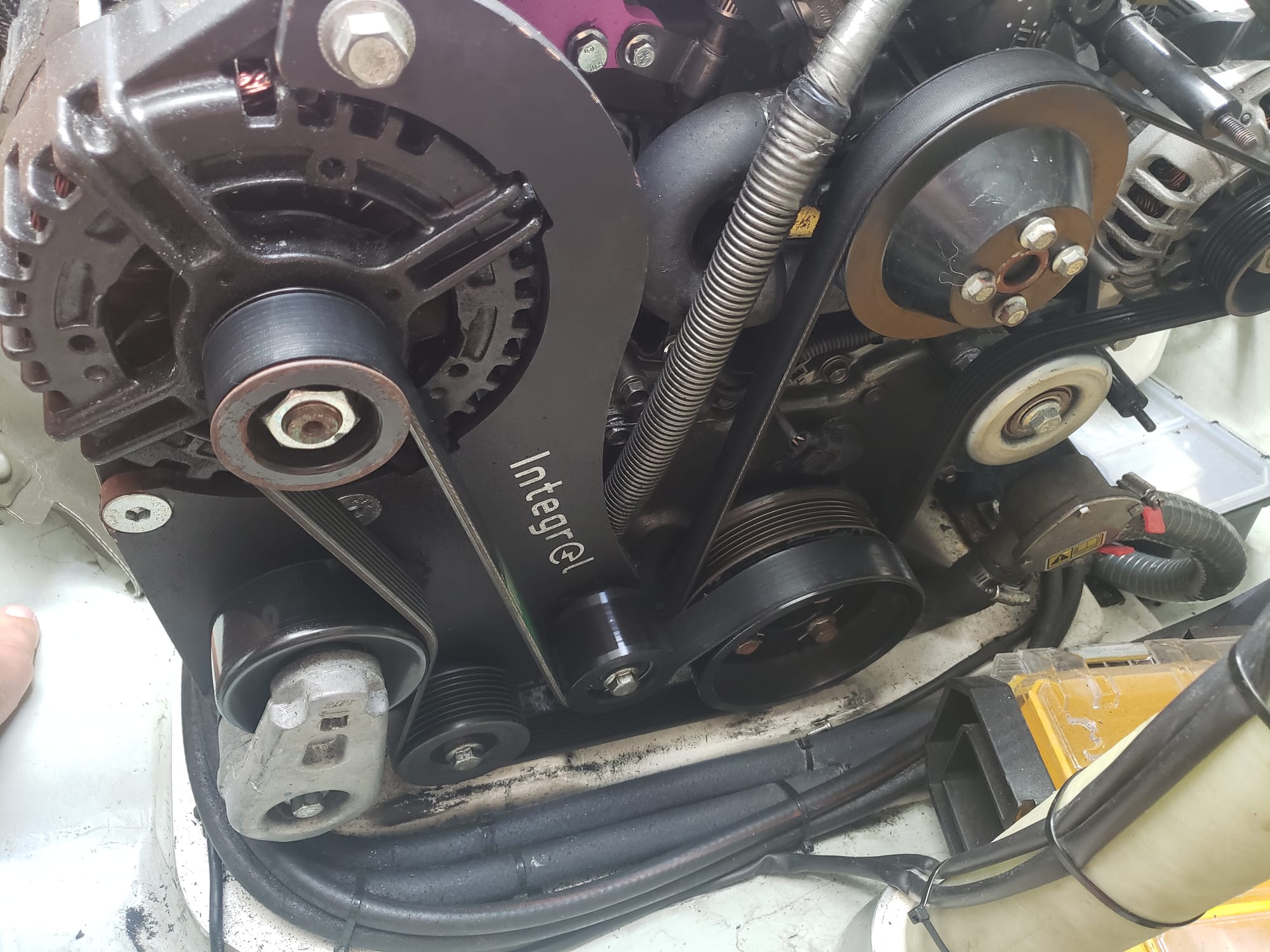
They produce a LOT of power very quickly. Admittedly, we are using them more than we would like, but as I said, I have plans...
I'll go into more detail on the Integrel system in a future blog post.
DC-to-DC charger
Finally for charging, we have a DC-to-DC charger that draws power from the 48V house bank and charges the 12V house bank when needed. Generally, the charger kicks in when the 12V battery is at 25% charge, or when we are running the alternators, or when the 48V battery is above 75% charge and there is a lot of solar power being produced.
This gets used quite a lot, just about every day.
What about wind?
We tend to have a fair bit of wind available, why not have wind generators? Lots of boats do have them!
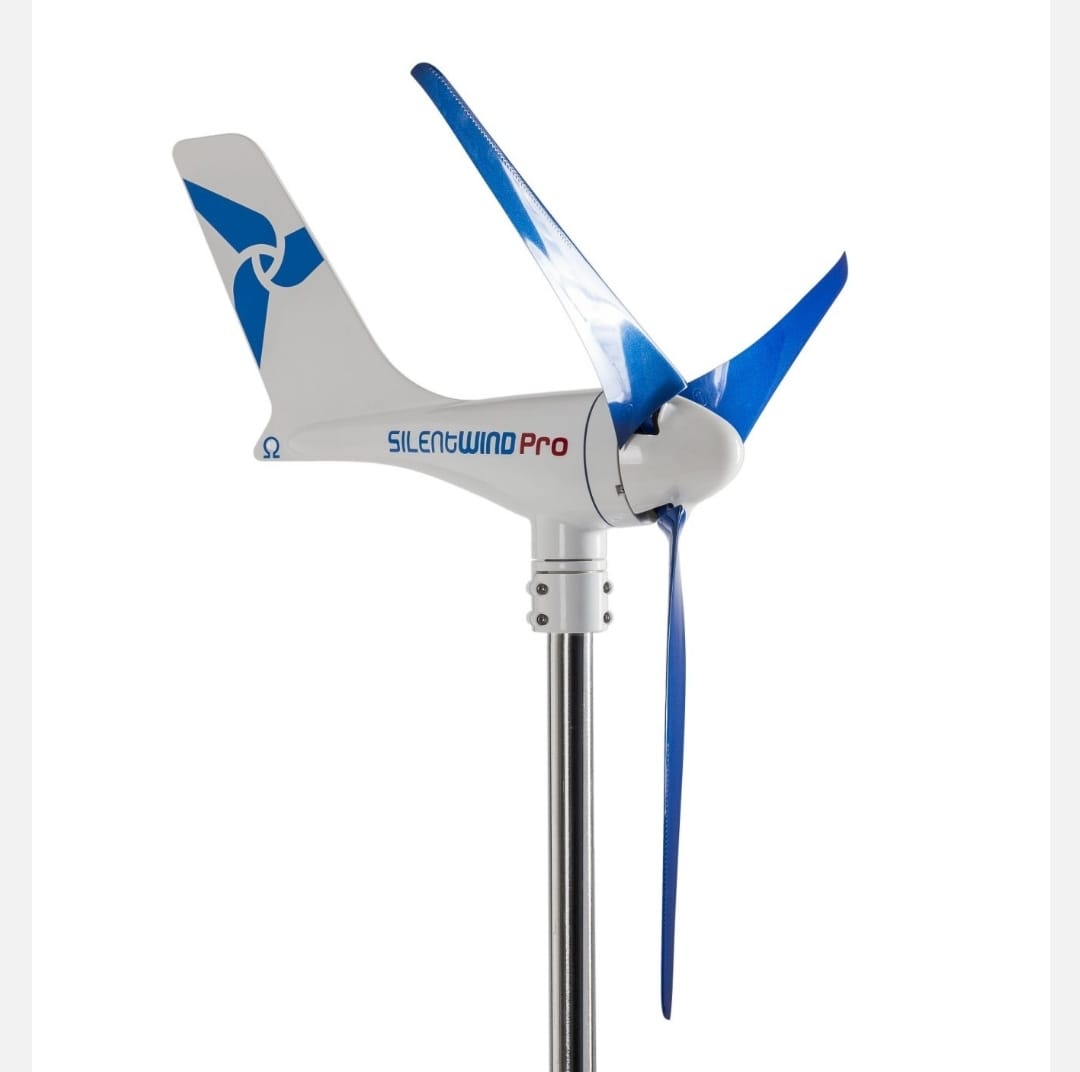
We actually did consider this, but decided to wait and see if the other power sources would be enough to meet our needs.
From talking to cruisers who have wind generators, most of them have expressed dissatisfaction with them, and none expressed particular love for them. They don't produce much power, and they tend to be noisy, either causing vibrations or giving off a high pitched whistling sound (or both). And they are expensive!
They don't have the limitations of solar panels, meaning that they can produce power on cloudy, rainy days and at night, so long as there is a good amount of wind blowing. And they take up less space than solar panels do. But they never quite live up to expectations.
As a good friend put it, "here's 60W in exchange for never being able to sleep again."
Maybe the technology will improve further, and the cost will go down. For now, we will continue to look at other technologies for power generation.
What about hydro generation?
Think of this as kind of like a waterproof wind generator. The unit goes in the water, and the motion of the water flowing over the blades turns them and generates power.
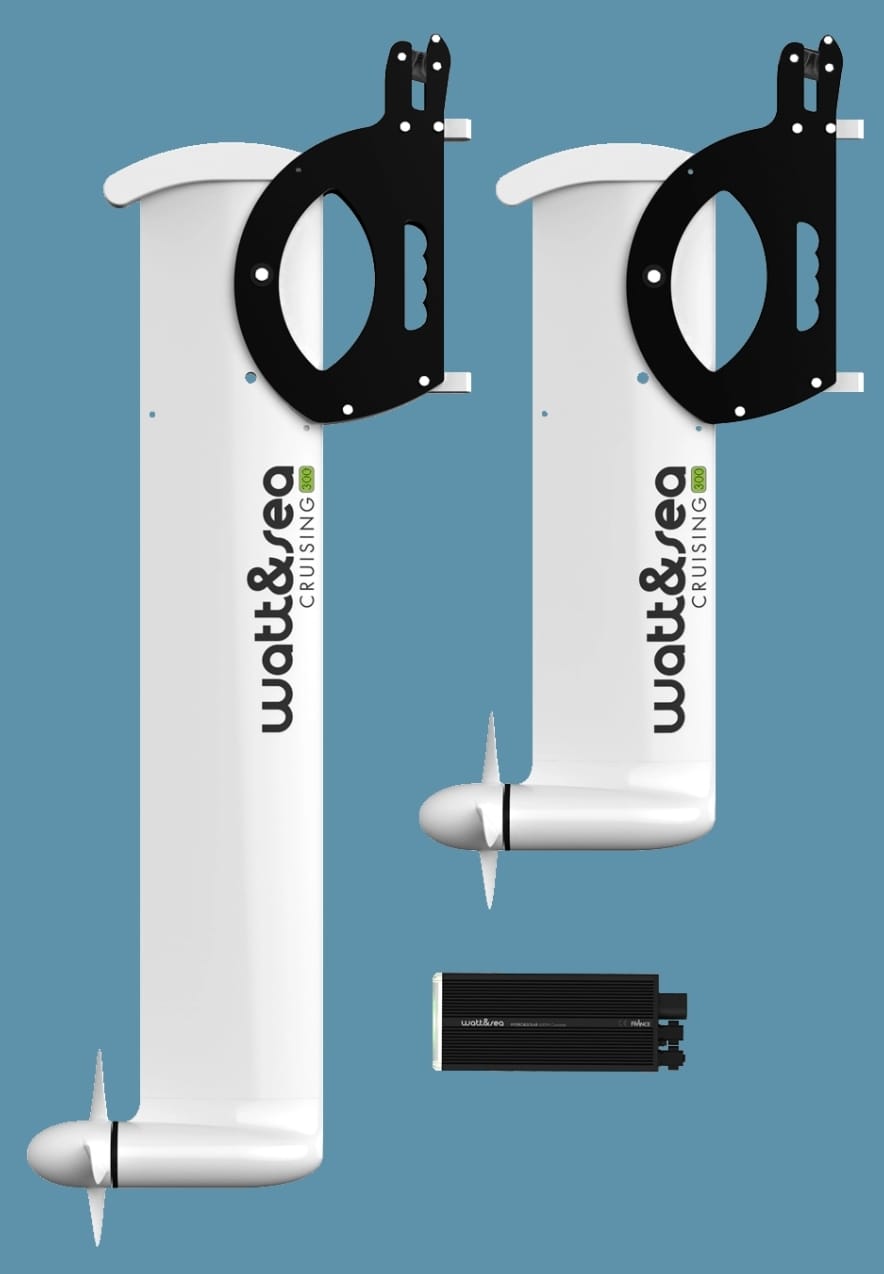
These devices are very expensive, and they only produce power when the boat is moving. And they only produce a moderate amount of power when the boat is moving faster than 6 knots. Below that speed, they produce practically nothing.
We spend at least 80% of our time at anchor, so it wouldn't really do much for us most of the time.
When sailing, with the speeds that we typically see, we might only get 300W out of it. This definitely isn't worth the cost.
Conclusion
We use a lot of electricity, and we produce a lot of electricity. We do have to be somewhat careful that we don't drain the batteries, and we do turn things off when we aren't using them, but we really don't worry about running an electrical device when we need to. And we certainly aren't roughing it as we live on board Away To Me.
We are seeing more and more boats that are configured similar to ours. The systems have been very reliable and they open up whole new worlds of convenience and comfort.
Some very new boats are starting to incorporate hybrid diesel/electric systems with really large batteries, and this configuration is installed at the factory. I have to admit, I'm a little jealous...I'm not jealous enough to spend a giant pile of money to own one, though!
